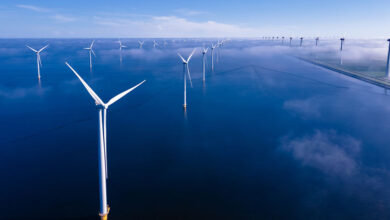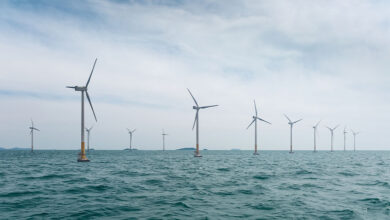Effective regional development


Following the publication of the National Planning Framework, Director of the Northern and Western Regional Assembly David Minton attends the eolas Planning Conference 2018 and discusses preparation for the publication of a Regional Spatial and Economic Strategy (RSES) and its potential to support ambitions to create the most connected region in Europe.
Offering a brief outline of the role of the Northern and Western Regional Assembly (NWRA), Minton says it is fundamentally about enhancing our relevance. We have a clear strategy for achieving this. Firstly, creating better places by ensuring the region adopts effective planning and economic development policies. Secondly, enhancing the region’s competitiveness by optimising all exchequer and EU funding to ensure appropriate levels of investment and infrastructure are secured for the region. Thirdly, to act as a platform for collaboration, knowledge transfer and ultimately regional economic development.
As Minton points out, the western and northern region of Ireland has undergone an “incredible transformation”. Tracing a short history over the past 100 years it has navigated migration and economic collapse and has emerged now as home to titles like ‘Fastest Growing City in Europe; Capital of Culture; Coolest Place on the Planet and for 2018 European Entrepreneurial Region. The creation of a Regional Spatial and Economic Strategy now aims to provide the platform to leverage these current successes for further growth.
“The challenge we have as a region is encapsulating all our strengths into an RSES,” he says. “Capturing our sectors, catchments, communities and our emerging propositions. Linking the spatial component of regional planning with ambitious economic strategy that is informed and aligned is no easy challenge. The really exciting direction is the integration of Metropolitan planning into our Regional Strategies.
“Analysing this divergence in the likes of Galway City, up to Letterkenny and across to Cavan and Monaghan and blending them all in to one strategy by 2018-19 is not an insignificant task.”
Alluding to the fact that the region suffers from a legacy image problem, Minton believes that the reality is very different. Among its accolades, the region boasts an economic catchment of 64,000 students, over 2,000 researchers and has seen an incredible 54 per cent increase in entrepreneurship since 2012. This figure was one of the main reasons the region competed for and won European Entrepreneurial Region for 2018. “Reflecting a new status, a new resilience and possibly a new future,” he says.
Despite its successes, Minton acknowledges that the region faces significant challenges in the shape of utility availability and infrastructure provision. “The other challenges lie in the likes of rail infrastructure, the electrical grid network and gas infrastructure, which all ultimately mean that it costs more money to do business in the west and the north west of Ireland. This means our region is not well served to be competitive in a global market. Resulting in more challenges sustaining and growing population.”
He adds: “There are still parts of this region that are over two hours away from the nearest motorway network. This is significant because despite this, we still have internationally successful indigenous companies and globally renowned brands located here. This is now our challenge, to demonstrate the latent economic potential of our region through regional planning. To encourage capital investment, make it easier for policy makers to invest in the northern and western region.”
Minton explains that the mindset of the need to look beyond county boundaries is already embedded in the region. Turning to the 900,000 sq km of ocean shelf in the west, he highlights that while the NDP recognises the connectivity Shannon Foynes Port can provide, there needs to be a greater focus on the likes of Galway Port and Killybegs Harbour to harness the proposition partnerships can deliver by 2040. “Equally the need to increase our connectivity with our border region, particularly the corridor between Cavan/Monaghan and Dublin.”
Minton highlights some of the ongoing partnerships operating in the region that reflect the need for increased regional responsiveness and adaptability. Initiatives like the IWAK investment group. A group of ambitious local authorities investing strategically in an airport and SDZ with the vision to replicate the success of Shannon. The likes of the North West Partnership (Letterkenny-Derry-Strabane), a cross territory partnership harnessing the potential of shared scale. “Equally we have emerging strong propositions such as the Atlantic Economic Corridor aiming to connect towns and local economies across the west coast of Ireland as a counterweight to the east coast,” he adds.
Before exploring the potential the NPF offers, Minton describes the history of regional development in Ireland as a “romantic entanglement” between the transactional and the transformative. “For me, the transactional has largely won out,” he states. “That’s led to a plethora of regional bodies, all doing good work but are we optimising these resources for a real regional growth framework. We need to start grappling with this idea of effective regional development and I think the Regional Spatial Economic Strategies are the platform for doing that. At one stage we were world leaders in regional development with Shannon. So, we know how to do it.”

“The challenge we have as a region is encapsulating all of our strengths into an RSES.”
The Northern and Western Regional Assembly Director has praised the placement of the Regional Spatial and Economic Strategies as central to the overall planning framework, the content of which includes the designation of Galway City as a metropolitan area and the designation of Athlone, Sligo and Letterkenny as growth centres.
Major road infrastructure improvements listed include the upgrade of the N2/A5/N14 from the North West Region to Monaghan and on to Dublin; An upgrade of the N4 from Mullingar- Longford-Carrick on Shannon-Sligo; improvement to the N3 from M3 to Cavan; completing the N6 Galway ring road; and upgrading the Atlantic Economic Corridor from Letterkenny- Sligo-Galway.
He outlines that much of the plan reflects a vision submitted to the Department by the Northern and Western Regional Assembly in collaboration with its nine local authorities over a year ago.
“We are delighted with the outcome of the NPF and it was testament to the management of a good consultation process, in that we submitted a strong proposition that was well regarded. The NPF team deserve great credit for how they managed the process and aligned the NPF with the Capital Development Plan.”
Minton outlines the region’s ambition is to publish a draft RSES by June/July 2018 and a full strategy by Q1 2019. However, he cautions against comprising on quality.
“For the first time in Ireland we can actually put the structures in place for effective regional development. In learning lessons from the past, studying international risks and understanding trends, what we need is responsiveness and resilience. RSES should be the catalyst in adopting international best practice in ‘effective regional development’, not just spatially but analysing growth patterns in the shape of jobs and enterprise. Our vision is the next economy is export orientated, people centred and fuelled by a low carbon strategy. More on this is available on www.nwra.ie.”





